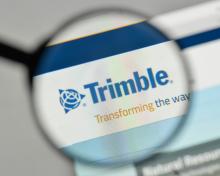Autodesk and Trimble say they have a shared goal of meeting the evolving needs of the building and infrastructure industries. Reliable, fluent exchange of information among multiple stakeholders and platforms is essential to this end. The Trimble and Autodesk collaboration demonstrates the firms’ ongoing commitment to support open industry standards such as Industry Foundation Classes (IFC) and Construction Operations Building Information Exchange (COBie), and can enable current and prospective Autodesk and Trimble customers working on the same projects to work together seamlessly through optimised file compatibility across applications.
Under the terms of agreement, Autodesk and Trimble will take steps to accelerate interoperability by exchanging Application Programming Interfaces (APIs) and developer tools to build and market interoperable products. This allows the two companies to improve upon existing data exchanges, as well as open up new workflows between their products. Tighter product-to-product integration can enable design and construction professionals to share models, project files and other data between select Autodesk and Trimble solutions both in the office and the field, and allow for the reuse of information during design and construction throughout all phases of the project.
“The strength of a company is best measured by its willingness to do what is right for its customers and the industry at large. This interoperability agreement, like others we’ve signed, speaks to Autodesk’s commitment to openness,” said Amar Hanspal, senior vice president, Autodesk. “This collaboration with Trimble speaks to our shared dedication to making the building process more efficient and productive for all involved.”
“This collaboration demonstrates our mutual commitment to provide design and construction professionals with a seamless experience from both Autodesk and Trimble design-build-operate solutions,” said Bryn Fosburgh, vice president at Trimble. “As a result, all stakeholders across the construction lifecycle can optimise their workflow efficiency.”







